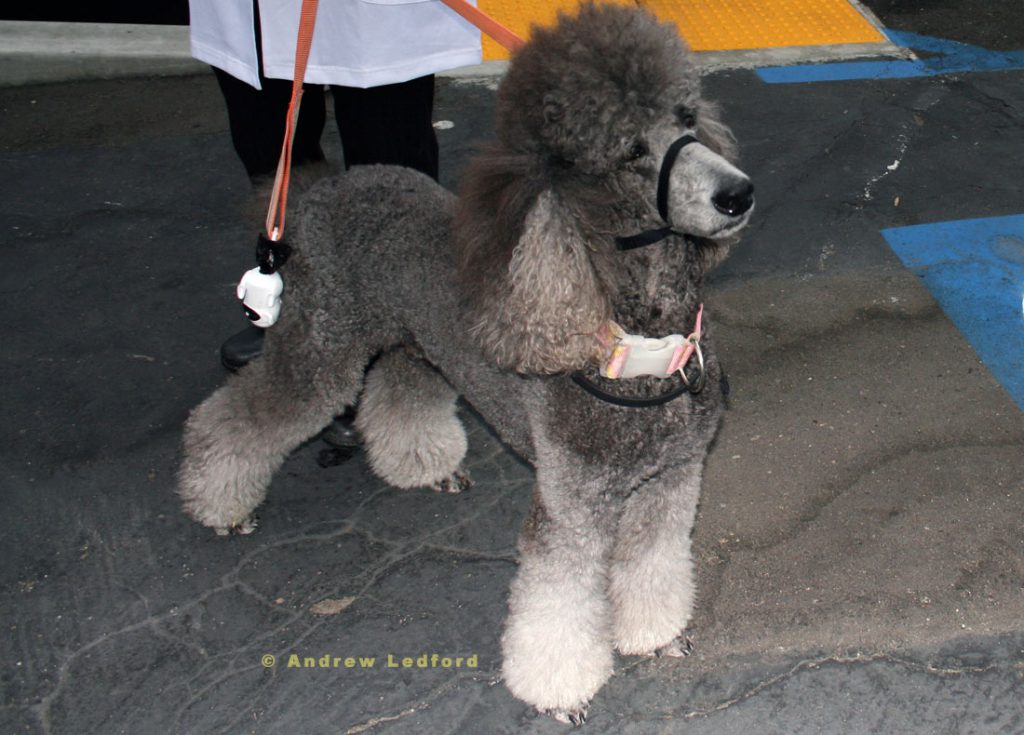Head Collars and Head Halter Dog Training
The Pros and Cons of Head Collars and Halters in Dog Training
Using a Head Collar (Head Halter) for dog training has become popular over the last fifteen years or so. The two head halter collars I’m most familiar with are the Halti and the Gentle Leader. The Gentle Leader is easier to fit than a Halti. Another advantage of the Gentle Leader is that it fastens around the dog’s neck, so if the dog slips its muzzle out of the Leader, it’s wearing an emergency collar. A Halti’s advantage lies in its ability to better control the dog. Control is particularly valued when working with aggressive dogs.

Head Collar and Head Halter advantages
Training with a head halter type of collar has some advantages over a traditional training collar. Head halters are usually more intuitive to use than a traditional training collar. The Gentle Leader type of head collar can make it easy to keep your dog from pulling you around. Head collars are great for turning the puller into the pullee. This makes them a good tool for those who lack the timing or the strength to control a dog with a regular slip style training collar.
Head Collars and Head Halters can be effectively used to control dogs in difficult situations or when actively training the dog requires too much effort. I often recommend using a head collar in situations where you know you’ll have a hard time controlling the dog. This can include times when your dog will have a difficult time with self-control. It’s better to physically restrain the dog with a head collar than have the dog learn to be out of control. I frequently use a head collar to work dogs in areas with high level distractions. It’s not unusual to see me training a dog with a head collar on Main Street in Huntington Beach or on 2nd Street in Long Beach.
video
Use a head collar when you are too distracted to train your dog.
A good time to use the head collar is when you’re on an outing where you know you won’t be focused on training the dog. Using a halter type collar can be especially beneficial when there are high level distractions and you’re paying more attention to having fun rather than training your dog.
Training a dog with the head collar is most effective when done in combination with positive reinforcement training. I mainly used food reinforcement for this; although there are other types of reinforcement that can also be effective.

Head halter collar disadvantages
There are some drawbacks to using a head collar. I think the head collar makes most dogs more equipment dependent than some other types of training collars. The effects of this can often be counterbalanced by using different kinds of equipment when training. In addition you need to be using some type of positive reinforcement in a head collar training program.
When introducing the head collar to some dogs, they really dislike wearing it. They paw at it, try to rub it off, and buck and pull like a wild horse. If your dog tries to take the collar off keep its head up. Sometimes the best thing to do is to keep the dog moving. A few dogs will try to hold their muzzle as they move. Not a terribly efficient form of walking, most dogs figure this out and begin to use their feet to stay with the handler. An alternative to moving is to have the dog sit by pulling the dog’s head up with the collar.
If your dog is the bucking and pulling type, try to hold your ground and or move a short distance from the dog while gently pulling and releasing the leash as you encourage the dog to come to you. Here I would suggest using a lot of body positioning, such as squatting down and turning to the side, or back up, as you coax the dog to you. Use food if your dog will work for it under these conditions.
When out in public some people will think your dog is wearing a muzzle. This is not a terrible problem in itself, but some owners find it uncomfortable. To avoid this problem try to get a collar in a color that matches your dog.
Common sense would indicate that a major disadvantage to using a head collar is that they can put a great deal of stress on the spine as well as on the neck muscles. I have heard one veterinarian say there is no chance that a head collar will injure a dog, and I’ve heard others say they suspect head collars contribute to neck injuries. Who to believe? I suggest using some common sense. What happens when you forcefully pull the dog back with a head collar? How does the force twist or turn the dog’s head?

A general rule I use when training with a head collar is to never make a snappy correction with the head collar. Instead use a smooth constant pull. I feel a forceful pull is probably okay, just watch yourself and don’t make the leash snap. You can also use your arms and body to take some of the shock out of a dog hitting the end of the leash.
The head collar can be effective, and it’s another training tool to be used when and where appropriate.
Call 714-827-4058 today to get more information about my in-home dog training programs.
We provide training services to all of Orange County, Long Beach, and the San Gabriel Valley. I do offer convenient customized In home training to a large portion of Southern California’s most dog friendly communities.
Andrew Ledford
714-827-4058

